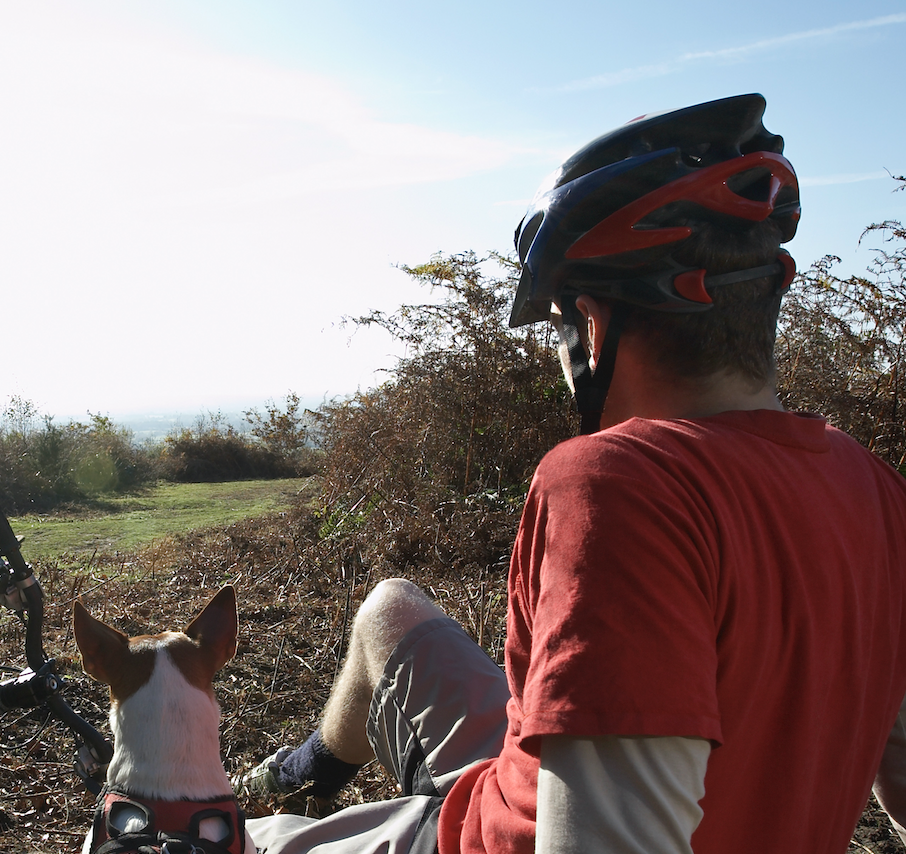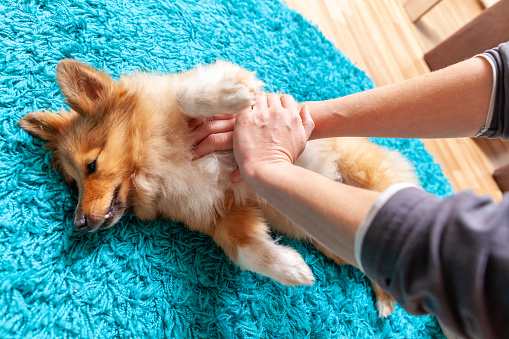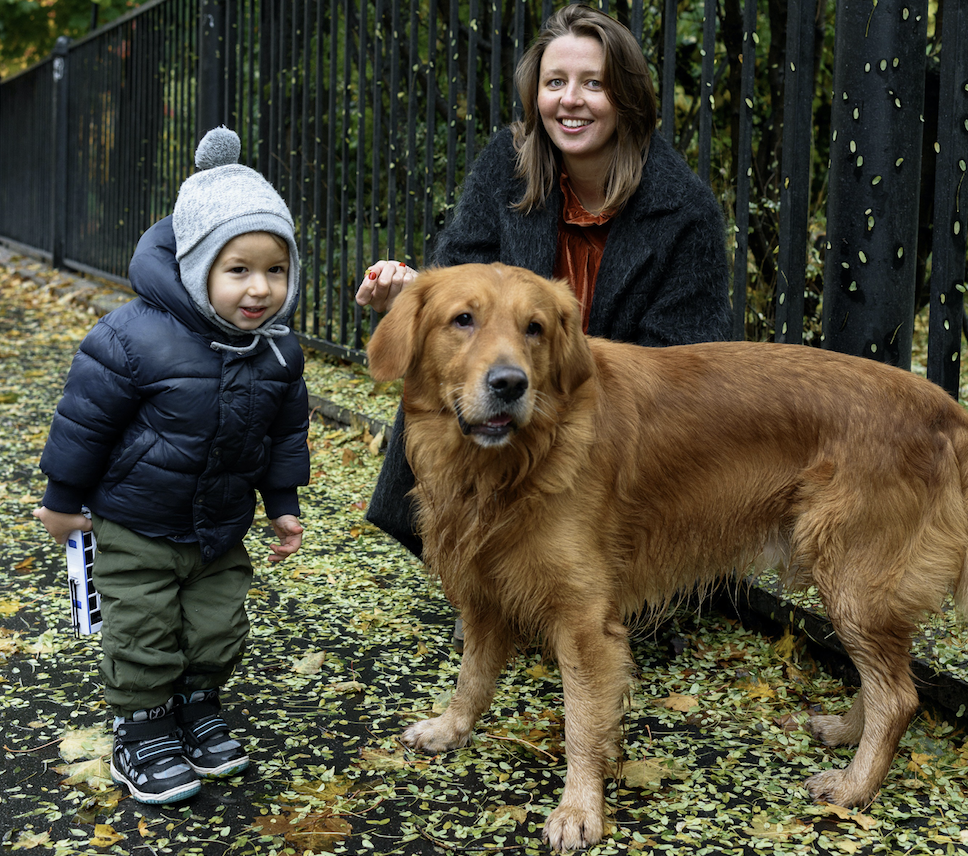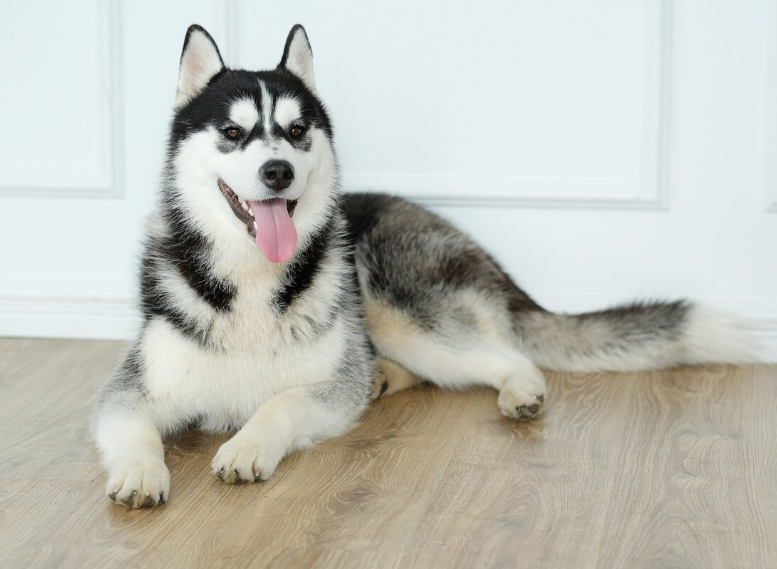
With a gorgeous wolf-like look, fluffy fur, beautiful eyes, and a cute thick bushy tail-many of us immediately fall in love with dogs such as the canines of the Husky breed. Is it the fact that these dogs look so closely related to their ancestors that attracts us so much to them...we will never know.
We know though that the Siberian Husky is among the most popular breeds worldwide and many individuals enjoy having them as pet companions. Their pack-oriented personality, attachment to the family, and playful attitude make them a preferred choice among people looking for a paw family member.
All the characteristics listed above are a prerequisite for building a solid training foundation. However, to become a good service animal, a dog needs to also possess other important qualities, the most essential ones of which are trainability, a calm demeanor, and the ability to prioritize tasks and work in complex situations and environments.
Having said that, are the Husky dogs a good choice when it comes to service animals, or you might need to keep them as pets only? We will clarify this question today!
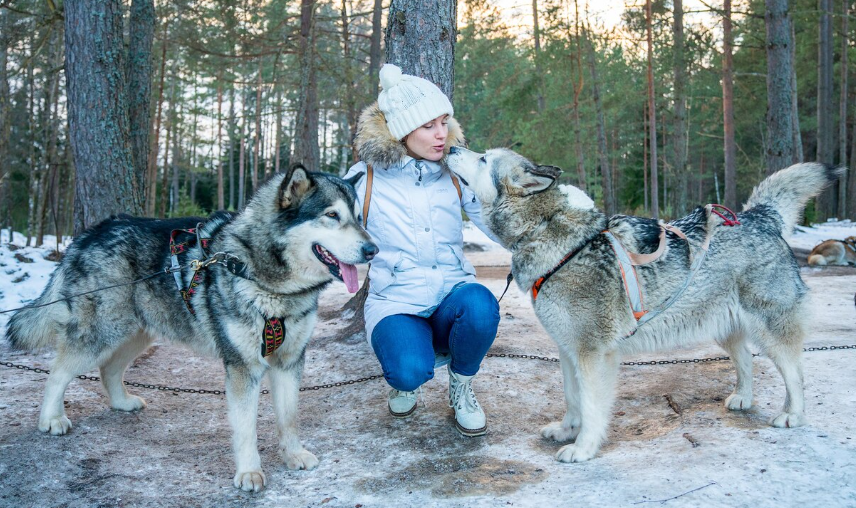
History
The roots of the Husky can be tracked down to the polar areas where its representatives were primarily used as sled dogs (most of us have watched at least one dog movie where a group of gorgeous Huskies pull a sled over snow). The name “Husky” is used rather as a generalized term to describe the dogs of the northern type who are known for their high tolerance to cold weather.
The representatives of the Husky who are used for racing nowadays and who have kept their arctic characteristics are known as Alaskan Huskies. They are different from the Siberian Huskies as well as the Alaskan Malamutes, which are both recognized by the American Kennel Club. The Alaskan Husky, on the other hand, is a type of crossbreed.
It is believed that because of admixture, almost all dogs are genetically related to the gray wolf; a few breeds of the Arctic type such as the Siberian Husky are also related to the Taimyr wolf (now an extinct species) and the Finnish Spitz and the Shar Pei.
Physical Appearance and Lifespan
Since we have already clarified that a Husky is a general term, we will continue using “Husky” to refer to the Siberian Husky in particular, since the Alaskan Husky is not officially recognized as a breed.
The gorgeous double-coat of these dogs can appear in the following color variations:
Black, Black & White, Black Tan & White, White, Red & White, Sable & White, Brown & White, Gray & White, and Agouti & White.
The Siberian Husky dogs can also have markings in two variations: Saddle-Back and Piebald.
The eyes of these beautiful dogs can be blue, brown, or both of them. Their ears are triangle-shaped and erect and their tails are fluffy and sometimes curl up.
A fact that may be interesting for you is that the tails of these dogs are not supposed to always be curled, and their position varies depending on the dog’s emotions and body posture. According to the American Kennel Club: “The well-furred tail of fox brush shape is set on just below the level of the topline, and is usually carried over the back in a graceful sickle curve when the dog is at attention. When carried up, the tail does not curl to either side of the body, nor does it snap flat against the back. A trailing tail is normal for the dog when in repose.”
The male representatives of the breed can reach up to 53-60 cm / 21-24 inches in height, while the female dogs usually reach up to 51-56 cm / 20-22 inches in height.
The weight that the male dogs can reach is about 20-27 kg / 44-60 lbs, while the weight of the female representatives is about 16-23 kg / 35-51 lbs.
The average lifespan of the canines of the Siberian Husky breed is 12-15 years.
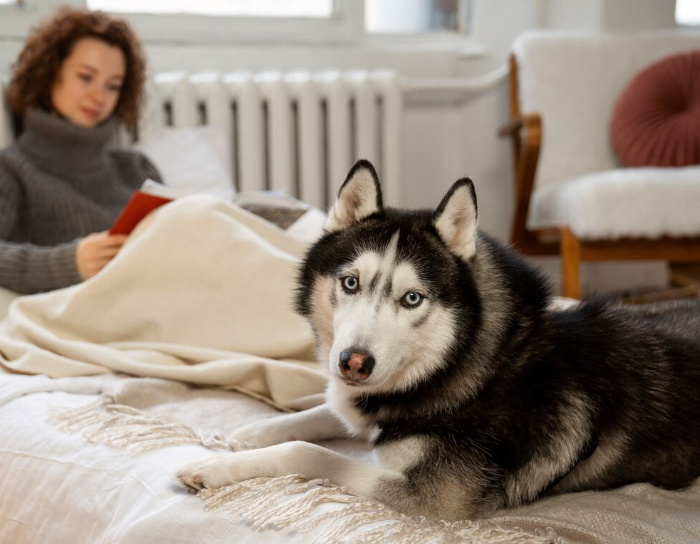
Temperament and Personality
The Siberian Husky is known as an affectionate dog breed, whose representatives can develop a very strong bond with their family members! While some dogs of the breed may have a reputation for being stubborn and less eager to please their owners compared to dogs of other breeds, other dogs of the Siberian Husky breed can become very clingy and attention-seeking.
Huskies are considered friendly with other dogs and pets in general, so if you live in a multiple-pet household, your Husky is likely to get along with the other pets (even if they are of different species).
What about children? The breed’s representatives are known for their tolerance of children and their potential to become great family pets. Their playfulness and energy can easily turn them into a child’s best companion! If your child is still a baby, you may need to supervise your dog’s interactions with it, and never forget that proper socialization is always required.
The Husky dogs usually have high energy levels, which require regular exercises and mentally stimulating games. If you are fond of outings and prefer to have an active lifestyle, a dog of this breed may be a good fit for you!
When it comes to barking levels, these dogs have a hell of a reputation... They are known for being very vocal. Instead of barking, their favorite type of vocalization seems to be howling. They often use it to express their emotions.
If you consider getting a dog of the Siberian Husky breed, you should be prepared to have a loud companion at home. This of course does not automatically apply to all breed representatives, but the chances for your Husky to be vocal, are quite big.
Social Aspects
Huskies are considered dogs who are very open to all types of people, whether family members or strangers. They are not likely to show signs of aggression, fear, or shyness when around unfamiliar people. It is rather the opposite-the dogs of the breed, may show a tendency to greet guests or unfamiliar people they meet.
The Siberian Husky is a breed that is deemed very adaptable and able to learn in different living environments and also navigate various types of situations.
If you are looking for a watchdog, you should keep in mind that Huskies are not the best choice for this type of job. They are not naturally protective, although their appearance may cause fear in some people. They are loving and playful and are likely to lack an aggressive disposition.
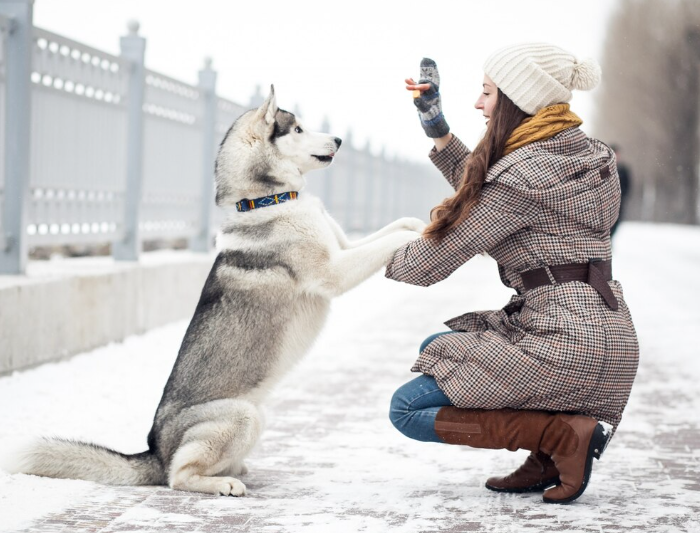
Trainability
Since we will discuss the possibility of training dogs of the Husky breed as service animals, the level of trainability is an important aspect to be considered.
Huskies’ trainability level is likely to be at a medium level. These dogs can have a tendency to be stubborn and independent, which can make the training process a bit challenging. If you are a new owner who needs a service animal, please carefully consider the advantages and disadvantages of having a Husky as your assistance dog.
This does not mean that you won’t be able to train them, but you may need to be very disciplined, extremely patient, consistent, and prepared for possible challenges on the way.
Also, Huskies can have a strong prey drive, which will require you to address this behavior if you are determined to train a canine of the breed as an assistance animal.
The feeling of independence these dogs have is likely to be related to the purpose of their development, namely as sled dogs, who are not supposed to have strong physical contact with their owner. Agility, strong physique, and endurance are the qualities these dogs have to possess to do their job as service animals properly.
If you are a Husky owner or if you are keen on this breed and want to train its representative, do not be discouraged! By using the right approach based on your dog’s needs and temperament and being patient, you may be able to turn a Husky into a great service animal!
Service Dog Tasks that a Husky Can Be Trained to Perform
We will list several types of service dog tasks, that a dog of the Husky breed can be trained to perform if their level of trainability and temperament allows that, and if the owner is ready to invest time and energy.
Mobility Tasks
Due to their strong physique and ability to work as sled dogs, the canines of this breed can be trained to perform more physically demanding tasks, that dogs of smaller breeds may not be able to. Providing balance support during walks, helping their owner to go up or downstairs, pulling a wheelchair, and retrieving items- a Husky with the right temperament for the job would excel in these tasks.
Medical Alert Tasks
Due to their physical features, namely a long-muzzled type of head, the Huskies can become excellent medical alert service dogs, who notify their owners of oncoming episodes (anxiety, low/high heart rates or blood sugar rates, oncoming seizure, etc.). Their predisposition to barking and natural alertness make them suitable for this type of service dog work.
Of course, you need to train them to show a specific behavior as a response to the medical episodes and motivate them to continue exhibiting this behavior.
Alerting to Sounds
Fire alarms, timers, knocking on the door, ringing the doorbell... Individuals with hearing impairments may greatly benefit from a dog who performs hearing service dog tasks. With proper training, a Husky can be taught to alert their owner to specific sounds in the environment.
Guide Tasks
Well-trained Huskies can provide great support to individuals who need assistance to navigate their surroundings. However, you need to make sure that your Husky is able to remain focused on you and control themselves, including their strong prey drive when outdoors. Otherwise, your dog may not be as reliable as it must be as an assistance animal.
Emotional Support and Psychiatric Service Dog Tasks
Who would refuse to cuddle with a lovely fluffy ball of fur? If your paw friend is attached to you, you may be able to easily train them as your Emotional Support Animal (ESA) or Psychiatric Service Dog (PSD).
In the first case, you will need to teach your dog basic obedience only and will benefit from the companionship and comfort they provide.
In the second case, specific PSD training will be needed, so that your paw friend learns to do specific work for you to help you deal with panic attacks, anxiety episodes, depression, bipolar disorder, PTSD, and other types of mental illnesses. Deep Pressure Therapy and tactile stimulation are among the common tasks that PSDs perform.
Training a Husky as a service dog may not be as easy as it would be with a dog of a different breed. Before embarking on this adventure, make sure that your dog has the right temperament for the job, that they are attuned to you, and that you have the time and energy needed to conduct training properly. Remember to be loving and understanding of your dog’s needs and always respect their boundaries and limitations, as we all have such.



